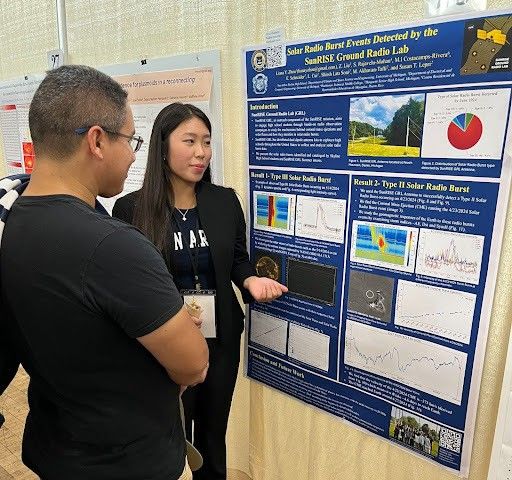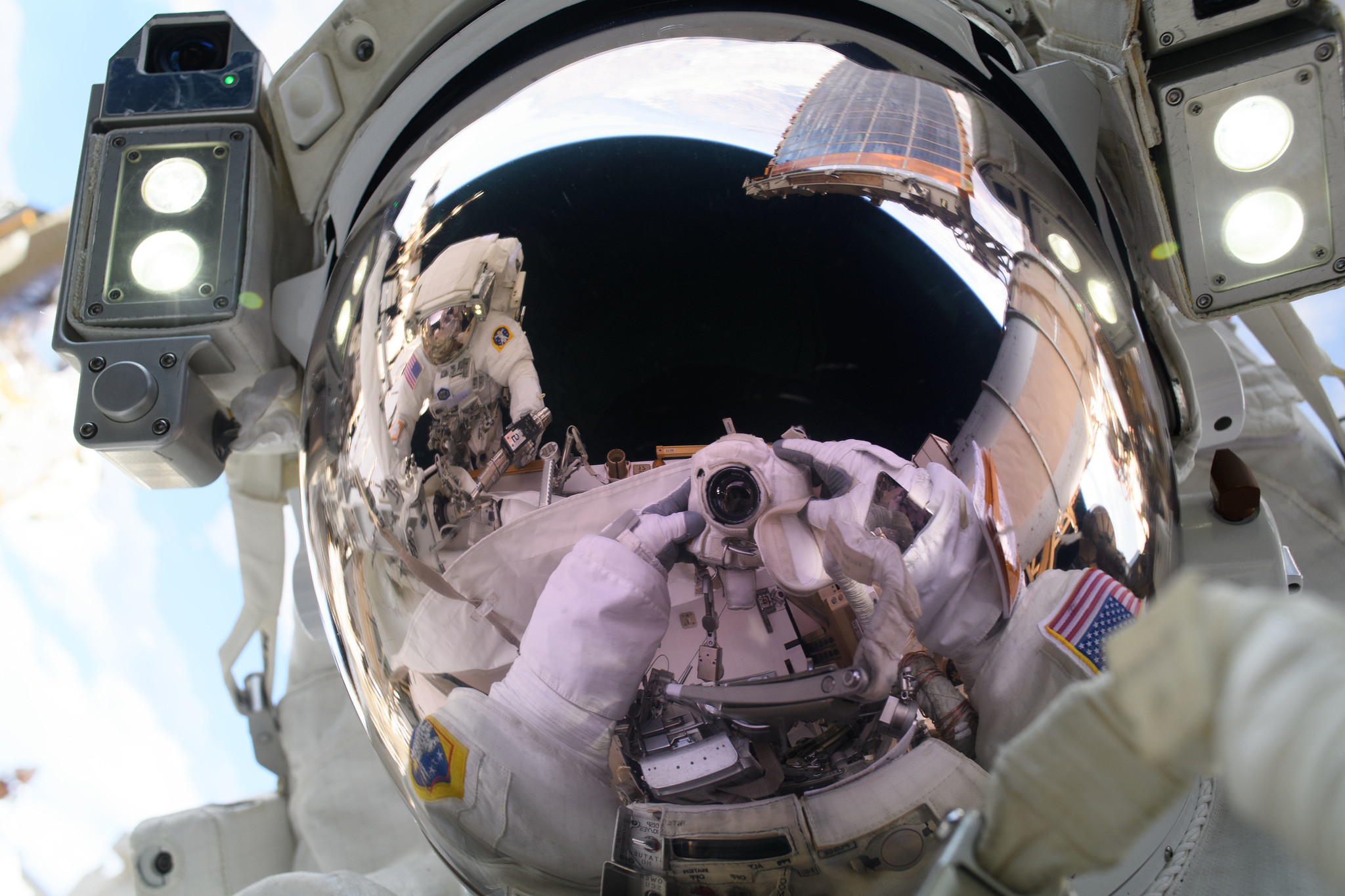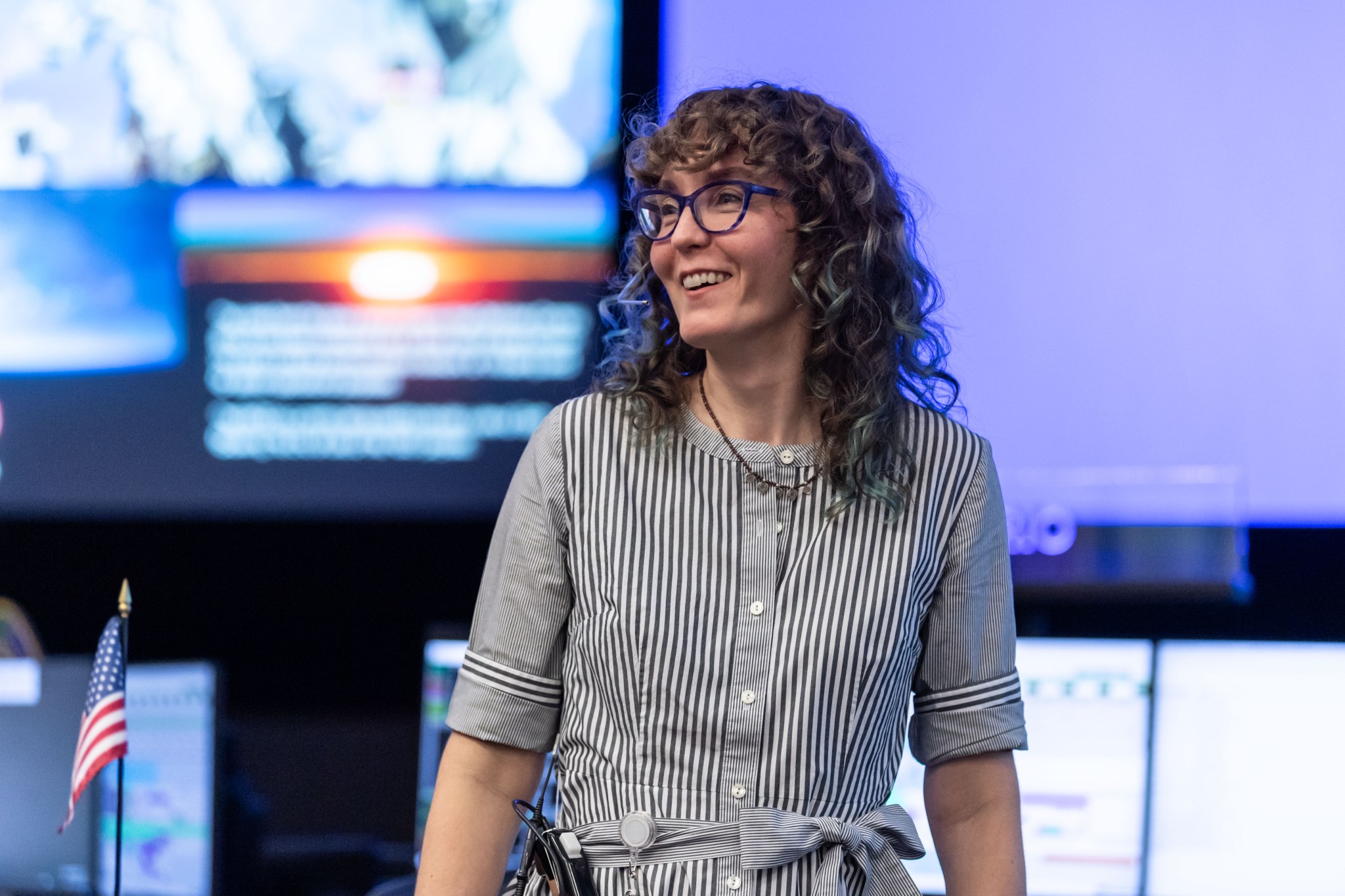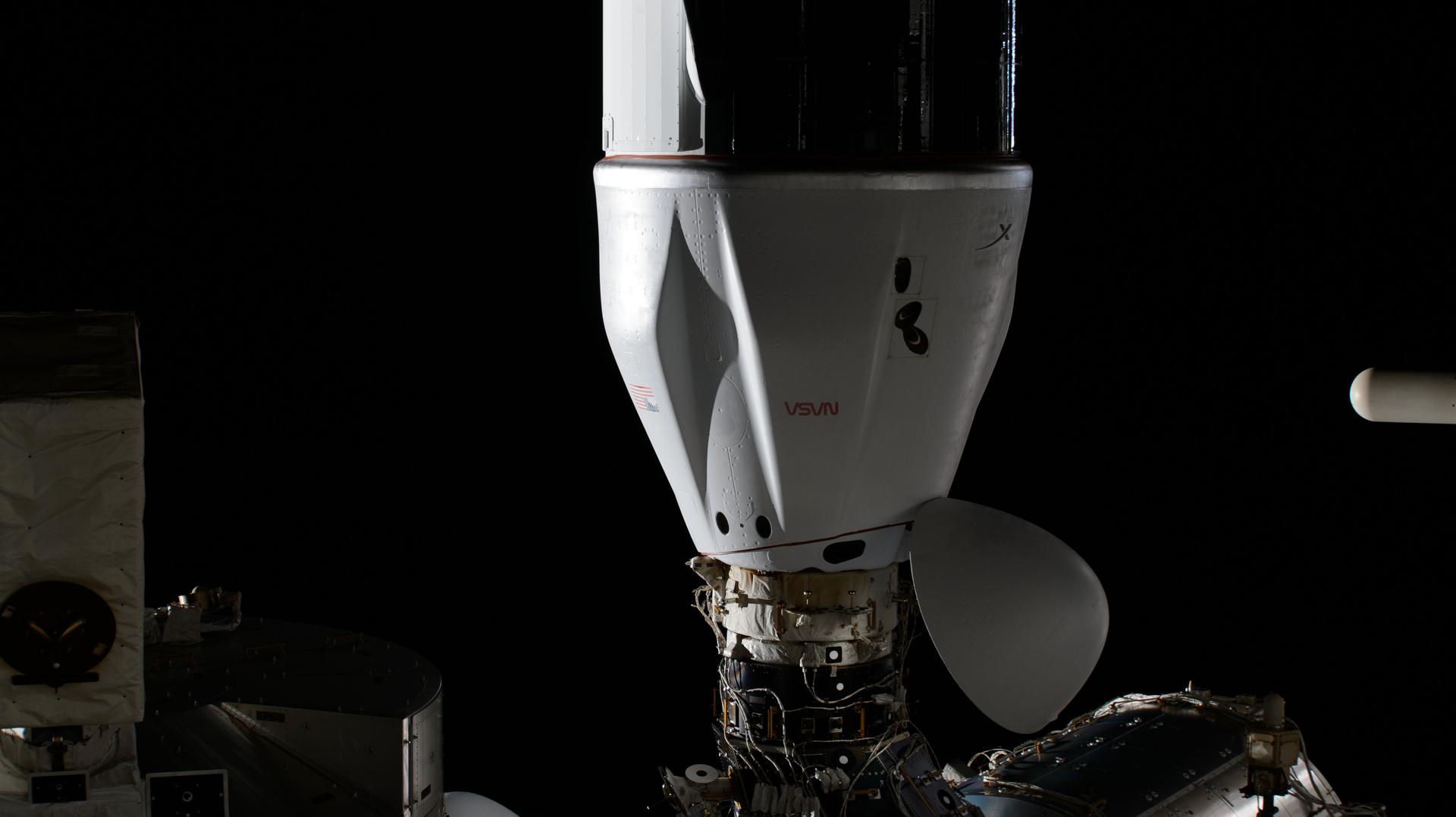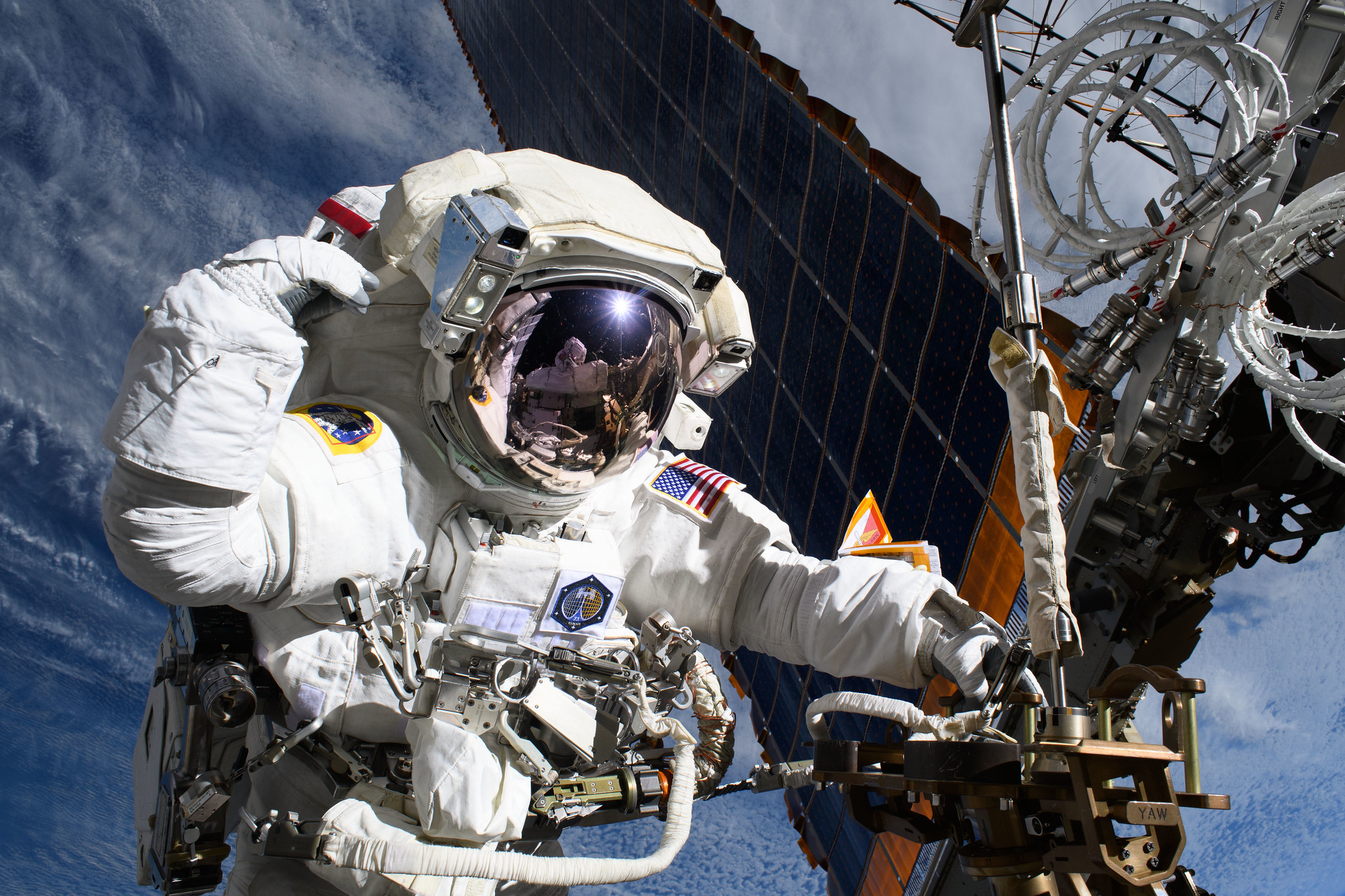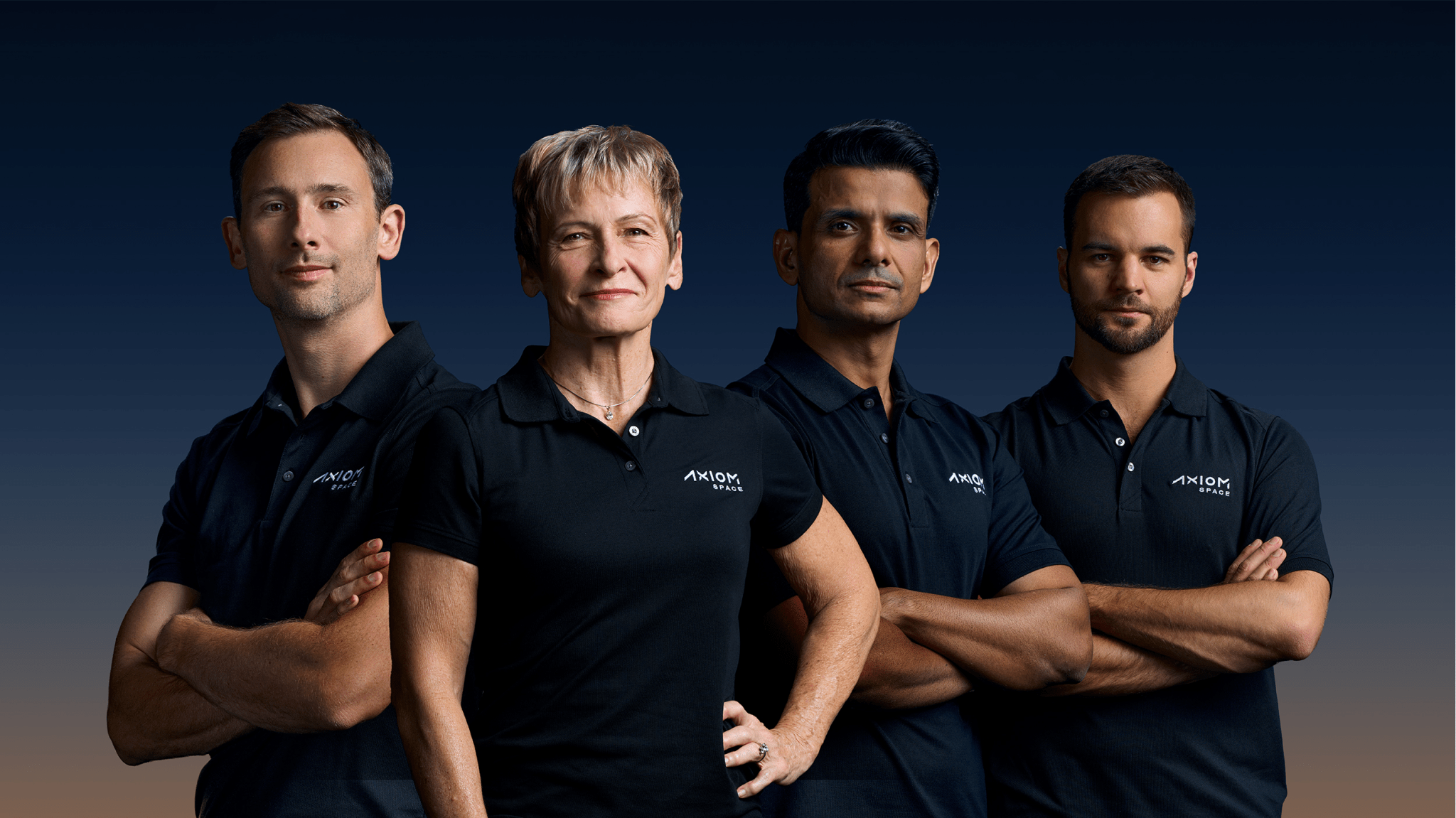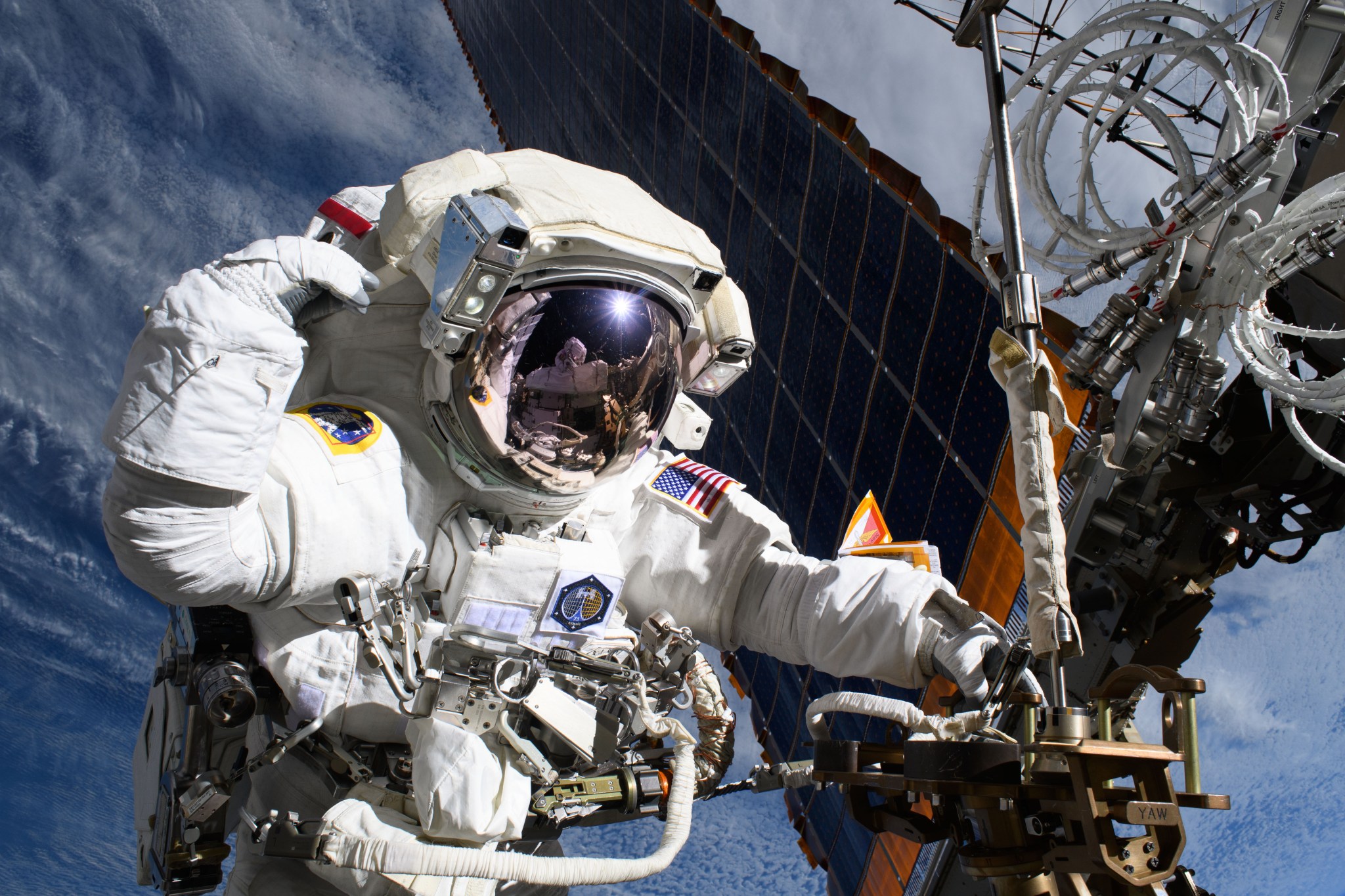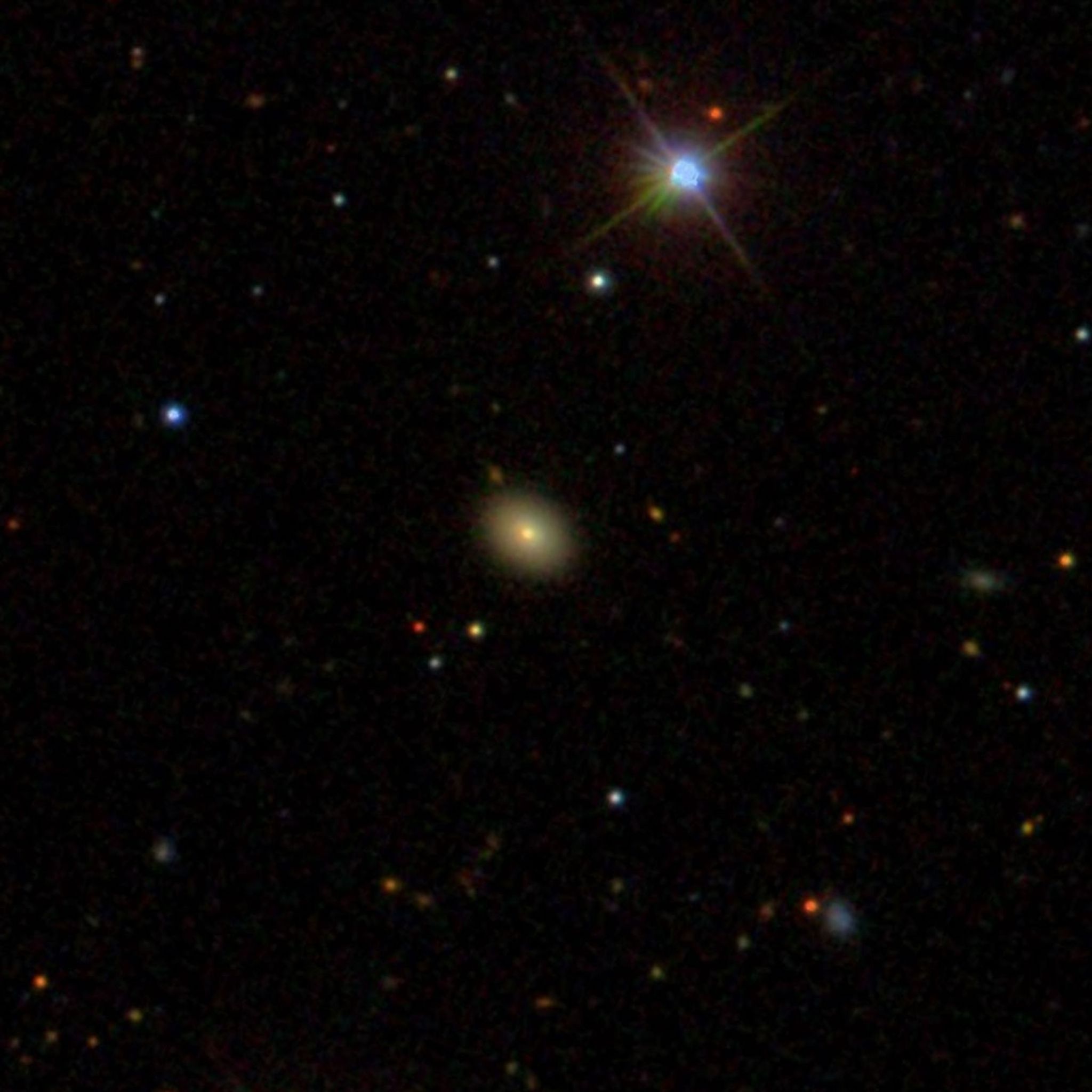3 min read Preparations for Next Moonwalk Simulations Underway (and Underwater) How do we do research in zero gravity? Actually when astronauts do experiments on the International Space Station, for instance, to environment on organisms, that environment is actually technically called microgravity. That is, things feel weightless, but we’re still under the influence of Earth’s gravity. Now, the very microgravity that we’re trying to study up there can make experiments actually really kind of difficult for a bunch of different reasons. First of all, stuff floats. So losing things in…
Read MoreTag: International Space Station (ISS)
NASA Astronaut to Answer Questions from Students in Washington State
NASA astronaut Anne McClain points a camera at herself and takes a “space-selfie” during a May 1, 2025, spacewalk outside the International Space Station. Credit: NASA NASA astronaut and Spokane, Washington, native Anne McClain will participate in an event with students from the Mobius Discovery Center located in her hometown. McClain will answer prerecorded questions submitted by students from aboard the International Space Station. Watch the 20-minute Earth-to-space call on the NASA STEM YouTube Channel. The event will take place at 1:25 p.m. EDT on Tuesday, May 27. Media interested…
Read MoreStation Nation: Meet Megan Harvey, Utilization Flight Lead and Capsule Communicator
Megan Harvey is a utilization flight lead and capsule communicator, or capcom, in the Research Integration Office at NASA’s Johnson Space Center in Houston. She integrates science payload constraints related to vehicles’ launch and landing schedules. She is also working to coordinate logistics for the return of SpaceX vehicles to West Coast landing sites. Read on to learn about Harvey’s career with NASA and more! Megan Harvey talking to a flight director from the Remote Interface Officer console in the Mission Control Center at NASA’s Johnson Space Center in Houston.…
Read MoreNASA Sets Coverage for 32nd SpaceX Resupply Mission Departure
The SpaceX Dragon cargo spacecraft, on NASA’s 30th Commercial Resupply Services mission, is pictured docked to the space-facing port on the International Space Station’s Harmony module on March 23, 2024. Credit: NASA NASA and its international partners will soon receive scientific research samples and hardware after a SpaceX Dragon spacecraft departs the International Space Station on Thursday, May 22, for its return to Earth. Live coverage of undocking and departure begins at 11:45 a.m. EDT on NASA+. Learn how to watch NASA content through a variety of platforms, including social…
Read MoreUnearthly Plumbing Required for Plant Watering in Space
4 min read Unearthly Plumbing Required for Plant Watering in Space NASA is demonstrating new microgravity fluids technologies to enable advanced “no-moving-parts” plant-watering methods aboard spacecraft. Boeing Astronauts Sunita Williams and Butch Wilmore during operations of Plant Water Management-6 (PWM-6) aboard the International Space Station. Image: NASA Crop production in microgravity will be important to provide whole food nutrition, dietary variety, and psychological benefits to astronauts exploring deep space. Unfortunately, even the simplest terrestrial plant watering methods face significant challenges when applied aboard spacecraft due to rogue bubbles, ingested gases,…
Read MoreNASA, International Astronauts Address Students from New York, Ohio
Astronaut Anne McClain is pictured on May 1, 2025, near one of the International Space Station’s main solar arrays. Credit: NASA NASA astronaut Nichole Ayers and JAXA (Japan Aerospace Exploration Agency) astronaut Takuya Onishi will answer prerecorded questions submitted by middle and high school students from New York and Ohio. Both groups will hear from the astronauts aboard the International Space Station in two separate events. The first event at 10:20 a.m. EDT on Tuesday, May 20, includes students from Long Beach Middle School in Lido Beach, New York. Media…
Read MoreSpacewalk Research and Technology
4 Min Read Spacewalk Research and Technology NASA astronaut Anne McClain prepares spacesuits ahead of the May 2025 spacewalk. Credits: NASA Science in Space: May Crew members on the International Space Station periodically conduct spacewalks to perform a variety of tasks such as installing, upgrading, and repairing equipment. During a spacewalk on May 1, astronauts installed hardware to support the planned addition of a seventh roll-out solar array on the exterior of the space station. Each of these arrays produces more than 20 kilowatts of electricity and together they will…
Read MoreNASA to Participate in Next Private Astronaut Mission Teleconference
The Axiom Mission 4, or Ax-4, crew will launch aboard a SpaceX Dragon spacecraft to the International Space Station from NASA’s Kennedy Space Center in Florida. From left to right: ESA (European Space Agency) astronaut Sławosz Uznański-Wiśniewski of Poland, former NASA astronaut Peggy Whitson, ISRO (Indian Space Research Organization) astronaut Shubhanshu Shukla, and Tibor Kapu of Hungary. Credit: Axiom Space NASA will join a media teleconference hosted by Axiom Space at 10:30 a.m. EDT, Tuesday, May 20, to discuss the launch of Axiom Mission 4 (Ax-4), the fourth private astronaut…
Read MoreNASA Astronaut Anne McClain Works on Space Station
NASA astronaut and Expedition 72 flight engineer Anne McClain is pictured near one of the International Space Station’s main solar arrays during a spacewalk. NASA/Nichole Ayers In this May 1, 2025, photo taken by fellow NASA astronaut Nichole Ayers, Anne McClain works near one of the International Space Station’s main solar arrays during a spacewalk. During the May 1 spacewalk – McClain’s third and Ayers’ first – the astronaut pair relocated a space station communications antenna and completed the initial mounting bracket installation steps for an International Space Station Rollout…
Read MoreNASA’s NICER Maps Debris From Recurring Cosmic Crashes
5 min read NASA’s NICER Maps Debris From Recurring Cosmic Crashes Lee esta nota de prensa en español aquí. For the first time, astronomers have probed the physical environment of repeating X-ray outbursts near monster black holes thanks to data from NASA’s NICER (Neutron star Interior Composition Explorer) and other missions. Scientists have only recently encountered this class of X-ray flares, called QPEs, or quasi-periodic eruptions. A system astronomers have nicknamed Ansky is the eighth QPE source discovered, and it produces the most energetic outbursts seen to date. Ansky also…
Read More